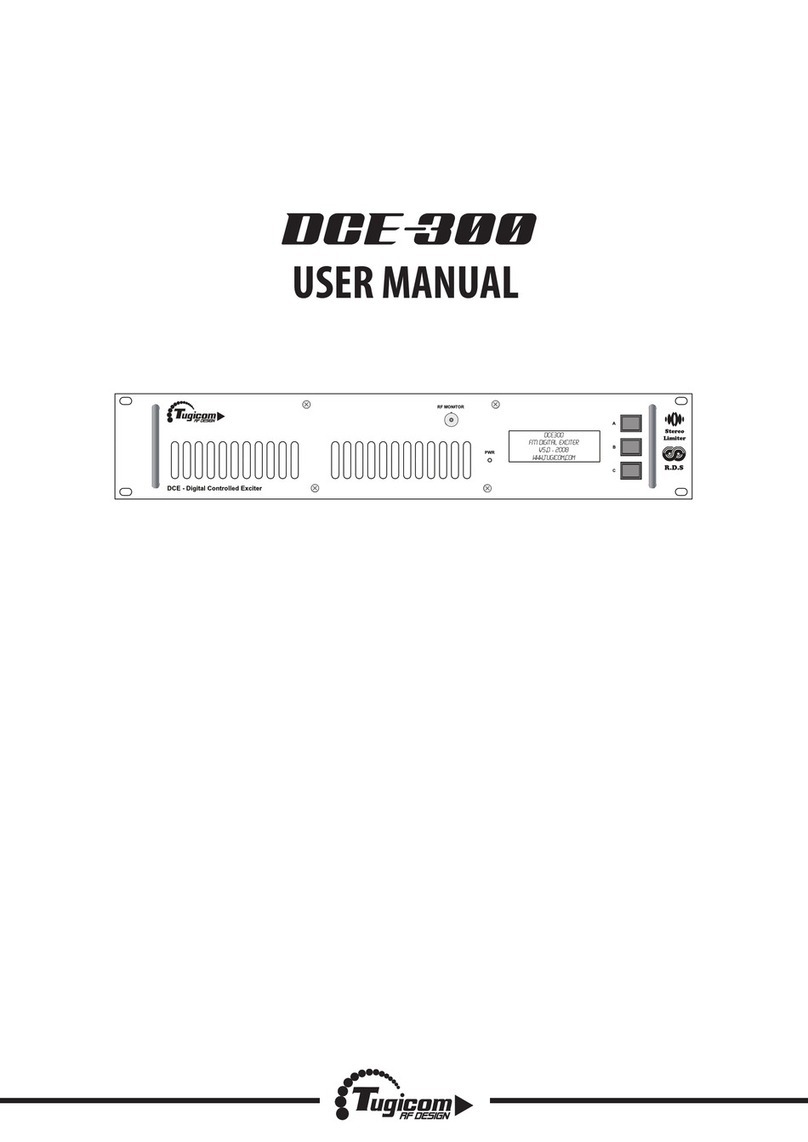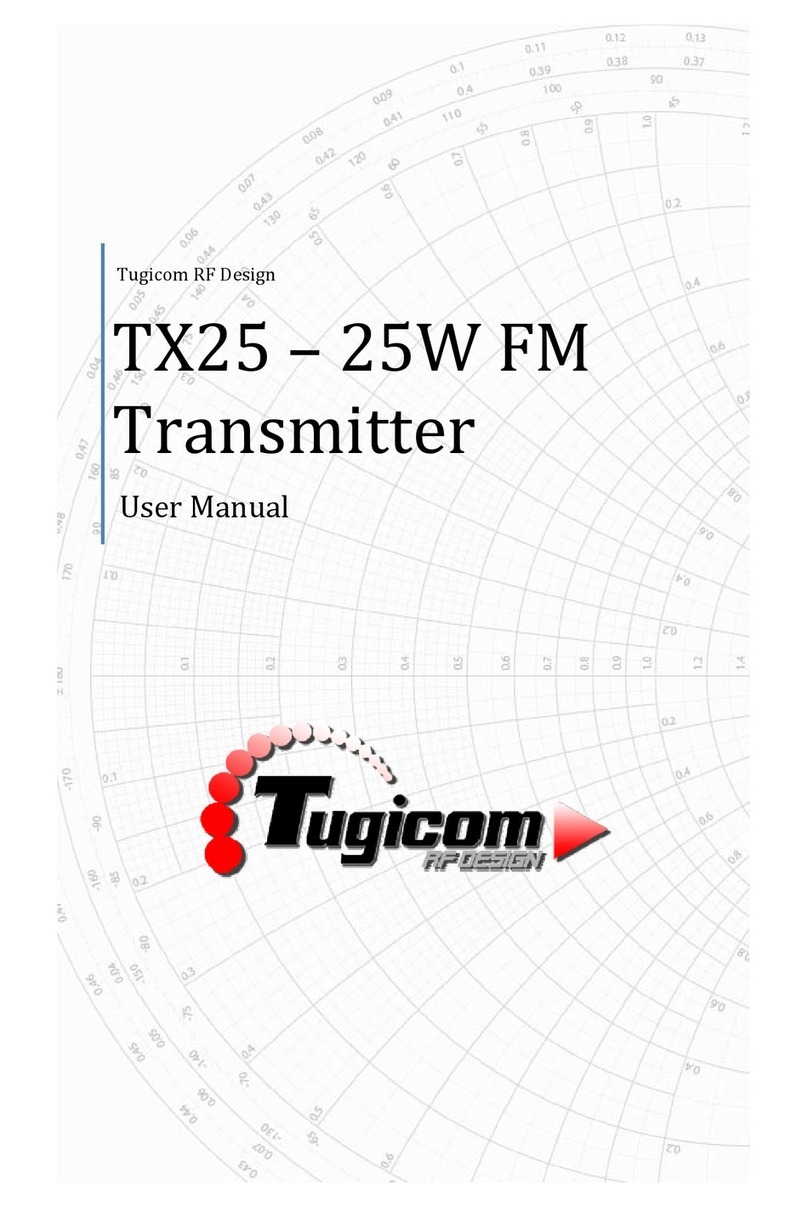
Theory of operation
Pre-emphasis (None/50uS/75uS)
Factory set to 75uS
In an FM system the higher audio frequencies are more sensitive to noises than the lower frequencies. Because of that all FM receivers attenuate the high
audio frequencies in order to cut noise level.
Therefore a pre-emphasis for the higher frequencies is used to compensate the receiver attenuation.
There are 2 pre-emphasis modes used worldwide: 75uS - U.S.A, Japan and 50uS – Europe, Africa, Australia, New-Zealand,
When connecting AUDIO from external audio processor, some processors may add pre-emphasis, adding pre-emphasis also by the TX190 will make the
audio sound with too much treble because pre-emphasis must by applied one time only, in this case, the pre-emphasis on the TX190 need to be set to "none"
to allow external pre-emphasis.
If pre-emphasis is set to "none" instead of 50uS or 75uS, a major lack of treble will be noticed.
In order to set pre-emphasis 2 jumpers must be used, one for Left channel and one for Right channel.
Both channels must be set to same pre-emphasis.
Factory set - On
TheTX190 has 2 options for MPX input.
When using the XLR connector to input the audio signal, the MPX bypass must be set to "On", when an external MPX generator is being used, MPX bypass
is connected to the XLR inputs.
Factory set to Stereo on
This jumper activates or deactivates the stereo pilot tone.
For stereo broadcast, the TX190 broadcast a special pilot tone at 19Khz with 8Khz deviation.
When jumper is open (no jumper placed), stereo pilot tone is present and receivers will open the Stereo decoder circuit.
When jumper is closed (jumper is placed), pilot tone will be deactivated, without pilot tone receivers will not activate the stereo decoder circuit and a mono
reception will be used.
Factory set to Limiter on
Exceeding the 75Khz modulation will result in poor audio quality and interference to other radio stations.
The limiter input and output has also clipper for protection against high levels.
Limiter Mode – Loud Mode/Pure Mode
Factory set to Loud Mode.
Loud mode (fast mode) will keep volume at maximum levels but will slightly make audio sound less natural.
Pure mode (slow mode) will keep audio natural but will be a slight loss of volume.
Both Left and Right channels has their own jumper, please remember to set both channel to same mode of operation.
Factory set to Clippers On.
Clippers are the last limiting function in order to protect against over modulation (more than 75Khz).
the correct levels in the external audio processor.
Both Left and Right channels has their own jumper, please remember to set both channel to same mode of operation.




























